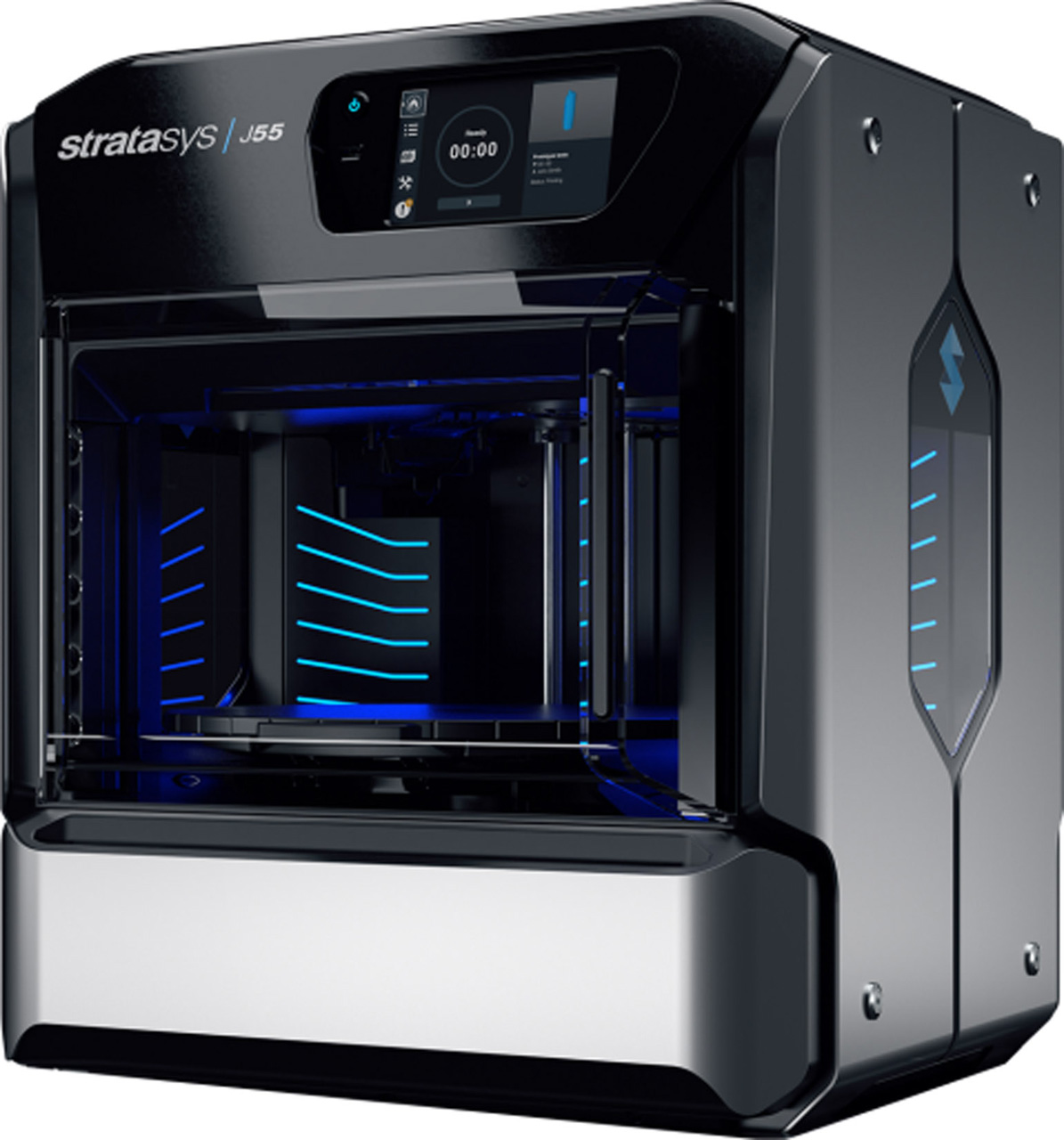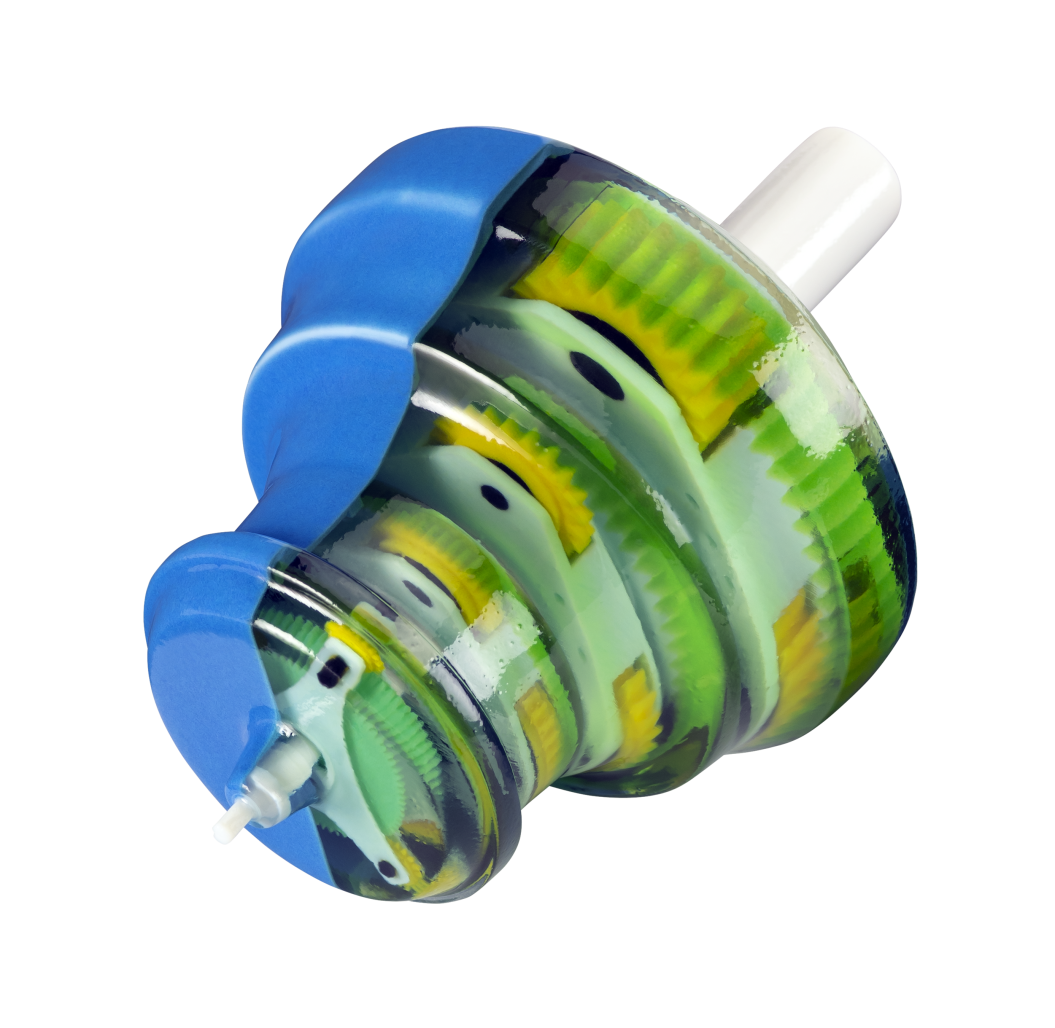Stratasys J55
Quality
With the Stratasys J55, there’s no need to compromise. Upgrade your design process with high resolution, fast prints, and multi-material capabilities.
Capacity
The J55 offers the best footprint-to-tray ratio on the market, allowing you to create the maximum number of models in one print.
Materials
Clear materials, 478,000 color gamut, Pantone Verified colors, put numerous colors and texture options – all at your fingertips. The J55 makes design realism fast, efficient, and accessible – whatever your need is.
Rigid, transparent, opaque, or fast draft – the J55 offers a wide range of materials to suit all your design needs. Multi-material capabilities let you load up to five materials at once and create multi-color parts in one print. With expansive options for color and texture combinations, there’s no need for hand painting. The J55 also features soluble SUP710™ for simple, hands-free support removal – meaning you have the freedom to design in exquisite detail without worrying about hours of post-processing.
When design decisions are color-dependent, the J55 provides PANTONE® validation and makes the Pantone Matching System (PMS) colors available for 3D printed models.
Color matching with Pantone is simple with the Stratasys GrabCAD Print software. By providing faster, more accurate color representation for models and prototypes, GrabCAD Print saves organizations hours that would be spent on traditional color-matching processes.
Office-friendly
Engineered for your office or studio space. It’s ultra-quiet, operating under 53 decibels – about the same as a household refrigerator. The smell-free system uses a ProAero™ Air Extractor to capture and filter out fumes.
Textures
From wood to fabric, the J55 offers a texture option to suit every design need. Virtually eliminate post-processing and upgrade the realism of your models with just a few clicks.
More Information

PolyJet System & Material Overview
PolyJet™ 3D printers empower designers, engineers, educators and healthcare professionals to create and problem-solve without the limitations of traditional methods of modeling. The power lies with PolyJet technology, curable liquid photopolymers capable of producing very fine layers for smooth surfaces, intricate details and vivid color.
Science, Technology, Engineering & Mathematics

By 2018, the U.S. will have more than 1.2 million unfilled jobs in the areas of science, technology, engineering, and math (STEM) because there will not be enough qualified workers to fill them. STEM is where jobs are today and where the job growth will be in the future.
Through activity-, project-, and problem-based curriculum, our programs give students a chance to apply what they know, identify problems, find unique solutions, and lead their own learning. When students understand how their education is relevant to their lives and future careers, they get excited, and are more successful.
Students gain knowledge and skills in the following STEM areas:
- Engineering design process
- Industry standard 3D modeling software
- Using an engineer’s notebook
- Mechanisms, energy, statics, materials, and kinematics
- Development of residential and commercial properties and structures
- Project research, testing and validation techniques


















